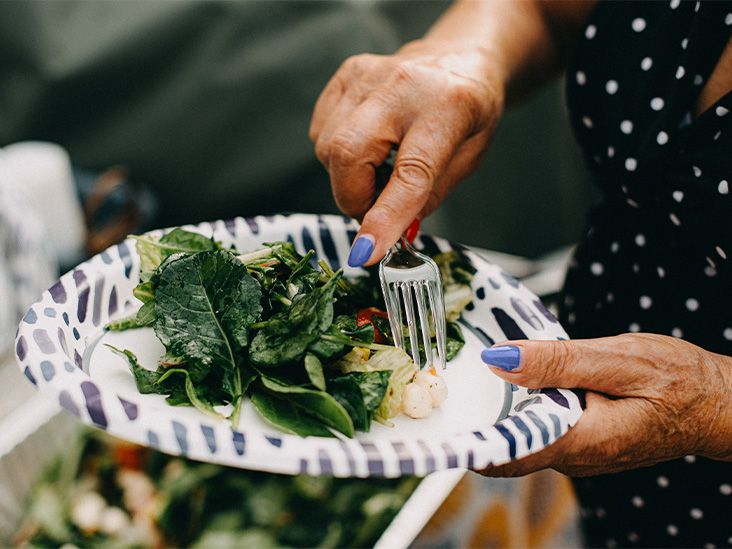Vitamin A needs to come from the diet, as the body does not make it. Foods that provide good sources include beef liver, cod liver oil, herring, sweet potato, carrots, and many other fruits and vegetables.

Vitamin A is an essential nutrient that plays a role in many bodily processes,
- immune function
- reproduction
- healthy vision
- proper functioning of the heart, lungs, kidneys, and other organs
- skin health
- growth and development
In this article, we describe 14 of the best sources of vitamin A and the recommended daily intake.
Animal livers are among the richest sources of vitamin A. This is
A 3-ounce (oz) serving of pan fried beef liver contains
The DV allows people to easily compare the nutrient contents of different foods. It is a percentage based on the recommended daily intakes of key nutrients from the
As an organ meat, liver is high in protein. It also
Lamb liver and liver sausage are other rich sources of vitamin A.
Fish livers are also excellent sources of preformed vitamin A, with 1 tablespoon of cod liver oil providing
This and other fish oils are among the richest sources of omega-3 fatty acids, which help fight inflammation and protect the heart.
Cod liver oil is also an excellent source of vitamin D, with 1 tablespoon containing
According to the
One whole sweet potato, baked in its skin, provides
The vitamin A present in this root vegetable is in the form of beta carotene.
Some
Sweet potatoes are also:
For a healthful meal, try having a baked sweet potato in the skin with a salad and a source of protein, such as salmon or tofu.
Further resources
For more in-depth resources about vitamins, minerals, and supplements, visit our dedicated hub.
Carrots are rich in beta carotene. Half a cup of raw carrots contains
A large carrot contains around
Carrots are also rich in dietary fiber, which can help prevent constipation and promote better gut health.
Beans are an excellent source of plant-based protein, and they are also rich in fiber. Each cup of boiled black eyed peas contains
Black-eyed peas are also a
Studies support the role of various types of beans in promoting heart health. For instance,
Other
Black-eyed peas are a versatile ingredient. Use them in salads, soups, and stews.
Like other leafy green vegetables, spinach contains a wealth of nutrients.
Each half-cup of boiled spinach provides
This serving also provides
Some
Sautéed spinach makes a tasty side dish, and spinach also works well in pasta dishes and soups.
Broccoli is another healthful source of vitamin A, with a half-cup providing
Half a cup of broccoli contains just
Vitamin K is
Eating cruciferous vegetables, such as broccoli,
People can roast, steam, or fry broccoli, enjoy it in soups, or add it to salads.
A half-cup of raw sweet red bell pepper provides
This serving only contains
Bell peppers are a great source of antioxidants such as
Try scrambling bell peppers with eggs, eating them in sandwiches, or serving sliced peppers with a healthful dip.
A whole, raw mango contains
Mangoes are rich in antioxidants and dietary fiber, which can contribute to better gut function and help control blood sugar.
This fruit is delicious on its own, but it works equally well in a tropical fruit salad or mango salsa.
A half-cup of this summer melon provides
Cantaloupe is a
Eat fresh cantaloupe on its own, with other fruit, or in a smoothie.
For a sweet treat that is rich in vitamin A, snack on dried apricots.
Ten dried apricot halves contain
However, dried apricots also contain a lot of sugar and calories, so it is important to consume them in moderation.
Pumpkin pie is another treat rich in vitamin A, with one piece containing
Pumpkin is also a good source of antioxidants, such as vitamin C, lutein, and zeaxanthin.
Eating pumpkin pie is less healthful than eating plain pumpkin, so enjoy it in moderation to avoid consuming too much sugar.
A three-quarter cup serving of tomato juice contains
Tomatoes are also
Like pumpkins, tomatoes and tomato juice contain lutein and zeaxanthin, which
A 3-oz serving of pickled Atlantic herring provides
Herring is also a
As a fatty fish, herring is a great option for those who want to increase their omega-3 intake for heart and brain health.
In fact, the
There are
- Preformed vitamin A: This comes in the form of retinol and is present in animal-based food sources, including meat, fish, poultry, and dairy products.
- Provitamin A: This comes in the form of carotenoids, mainly beta carotene. It is present in plant-based foods, such as fruits and vegetables.
To aid the absorption of vitamin A, a person needs to include some fat in their diet. It is also important not to overcook foods, as this
The
| Demographic | Daily amount (mcg) |
| Males aged 14+ | 900 |
| Females aged 14+ | 700 |
| Pregnant teens aged 14–18 | 750 |
| Pregnant adults aged 19+ | 770 |
| Breastfeeding teens aged 14–18 | 1,200 |
| Breastfeeding adults aged 19+ | 1,300 |
Many foods, both plant-based and from animals, contain good amounts of vitamin A.
Vitamin A deficiency is uncommon in the U.S., and most people do not need to worry too much about counting vitamin A values.
The best way to ensure an adequate nutrient intake is to eat a varied and balanced diet, full of fruits, vegetables, whole grains, healthful fats, and lean proteins.


